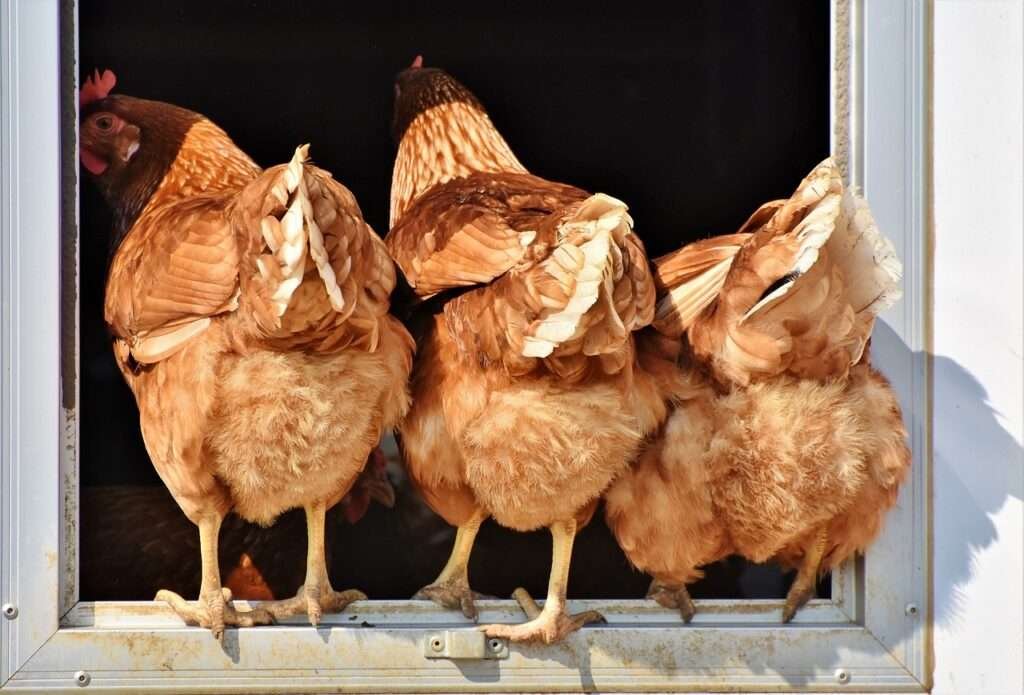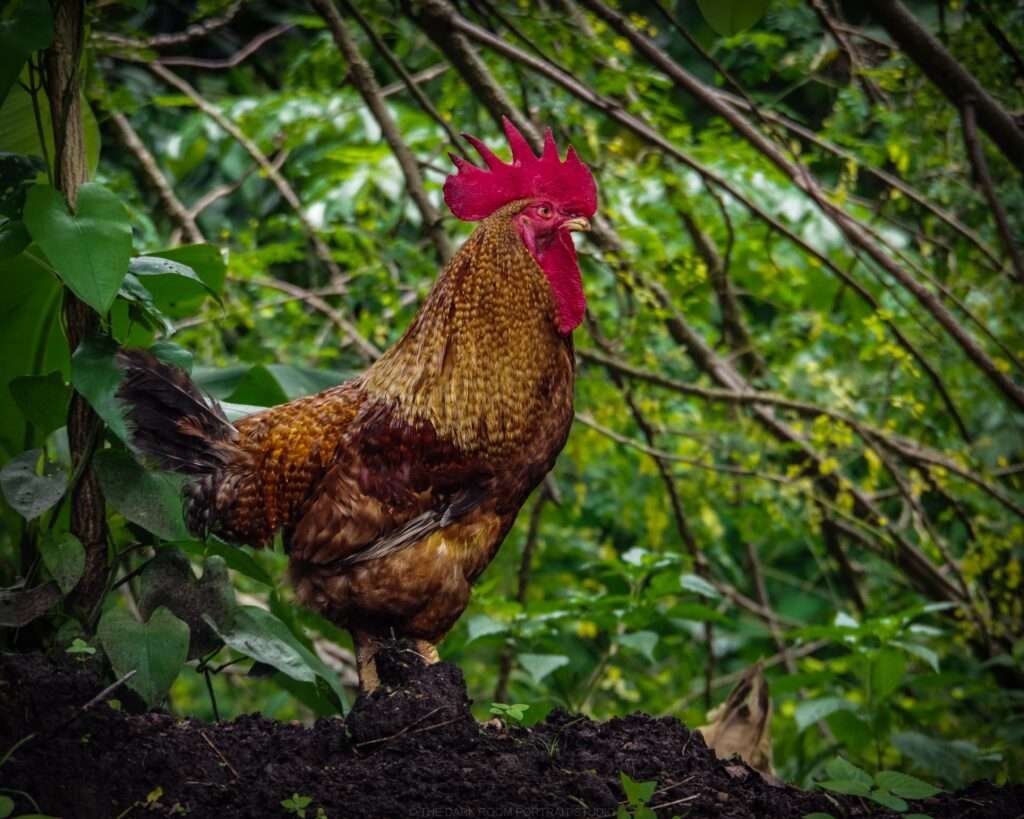When you’re a backyard chicken keeper, you quickly become an expert in deciphering a unique language – chicken poop color. While it might not be the most glamorous aspect of chicken husbandry, understanding what chicken poop colors mean is a crucial part of keeping your feathered friends healthy. It’s like your chickens are trying to tell you something through their droppings, and it’s up to you to listen and take action when needed.
Chicken Poop Colors
Chicken poop comes in an astonishing array of colors, and it can change based on various factors. From the everyday grayish-brown to shades of green, yellow, and even red, the colors your chickens produce can provide valuable insights into their well-being.
Why is this important? Well, chicken poop is more than just waste. It’s a window into your flock’s health. Any deviation from the norm can be an early sign that something is amiss, allowing you to take action before a minor issue becomes a major problem. So, let’s better understand the vibrant world of chicken poop and explore what different colors might mean for your feathered companions.

Normal Chicken Poop Color
Before we delve into the rainbow of colors that chicken poop can be, let’s start with what’s considered normal. Normal chicken poop can vary, depending on factors such as diet, age, and hydration levels. Generally, though, healthy chicken poop falls within a range of colors that include:
1. Brown to Grayish-Brown: This is the color most chicken keepers are familiar with. Healthy, well-hydrated chickens typically produce brownish-gray poop. The consistency is usually firm, and it should hold its shape when deposited.
2. Greenish Tinge: Occasionally, you might notice a greenish tinge in your chickens’ poop. This can happen due to a diet rich in green, leafy vegetables, and it’s usually not a cause for concern. As long as the droppings are otherwise normal, a bit of green is perfectly fine.
3. White Cap: Chickens also excrete a white, chalky substance called urate. It often appears as a cap on top of the brown or grayish-brown feces. This is a normal part of chicken poop, representing the removal of waste from the kidneys.
4. Coiled Shape: Healthy chicken droppings often have a coiled or segmented appearance. This is because chickens have a part of their digestive system called the ceca, which produces cecal poop. It’s usually darker and wetter than the rest of the droppings and helps with nutrient absorption.
Understanding what’s normal for your chickens is crucial before you can identify what might be abnormal. Keep in mind that the color of chicken poop can vary from bird to bird, so familiarize yourself with what’s typical for your flock to get an accurate baseline. Now, let’s move on to explore the intriguing world of abnormal chicken poop colors and what they might signify.

Abnormal Chicken Poop Color and What They Indicate
Chicken poop colors can take on a variety of hues that may initially leave you scratching your head. However, these deviations from the norm can offer important clues about your chickens’ health. Let’s take a closer look at some of the most common abnormal chicken poop colors and what they might indicate:
Green Poop:
- Potential Causes: Green poop can result from excess consumption of green, leafy vegetation or certain vegetables like spinach.
- Action: If green poop is occasional and your chickens are otherwise healthy, it’s likely not a cause for concern. However, if it persists, consider adjusting their diet to reduce the intake of green foods.
Yellow Poop:
- Potential Causes: Yellow poop can be caused by the ingestion of yellow-colored foods like corn or from issues with the liver or gallbladder.
- Action: Occasional yellow poop due to diet is generally harmless. However, if yellow poop is persistent, accompanied by other symptoms like lethargy or loss of appetite, consult a veterinarian.
White Poop:
- Potential Causes: White poop may indicate a problem with the liver or gallbladder, such as a blockage in the bile ducts.
- Action: White poop is a concerning sign. Seek immediate veterinary assistance as it can be indicative of a serious health issue.
Black or Tarry Poop:
- Potential Causes: Black, tarry poop may indicate internal bleeding or the presence of digested blood, often from issues in the upper digestive tract.
- Action: This is a serious matter. Consult a veterinarian immediately for a proper diagnosis and treatment.
Red Streaks or Blood in Poop:
- Potential Causes: Red streaks or visible blood in poop can result from various issues, including hemorrhoids, parasites, or cecal bleeding.
- Action: While small traces of blood can sometimes be harmless, any sign of blood in poop should be taken seriously. Consult a veterinarian to identify the cause and appropriate treatment.
Grey or Pale Poop:
- Potential Causes: Grey or pale poop can indicate a problem with the pancreas or liver, affecting the digestion and absorption of fats.
- Action: This is another concerning sign. Consult a veterinarian for a thorough examination and diagnosis.
Mucus or Watery Poop:
- Potential Causes: Mucus or watery poop may be linked to digestive issues, such as infections or dietary imbalances.
- Action: If it occurs infrequently and your chickens appear healthy, monitor their condition. However, persistent mucus or watery poop requires veterinary attention.
Foamy or Frothy Poop:
- Potential Causes: Foamy or frothy poop might result from rapid consumption of water, excessive stress, or bacterial infections.
- Action: Ensure your chickens have access to clean water and reduce stress factors. If the issue persists, consult a veterinarian.
While these descriptions provide insight into potential causes of abnormal chicken poop colors, remember that chicken health can be complex, and multiple factors may contribute to a specific symptom. If you notice unusual poop colors in your flock, it’s crucial to observe their overall behavior, appetite, and energy levels. When in doubt or if you’re concerned about any changes in your chickens’ droppings, it’s always advisable to seek professional guidance from a poultry veterinarian. In the next section, we’ll discuss the appropriate actions to take based on these observations.

Home Remedies vs. Professional Help
Recognizing abnormal chicken poop colors is just the first step. The next important question is, “What should you do about it?” Depending on the situation and severity, you might wonder whether you can address the issue at home or if you should seek professional help. Let’s explore the options:
1. Home Remedies and Actions:
- Adjust Diet: If you suspect diet-related poop color changes, consider modifying their food. For example, reduce green foods if you notice green poop.
- Ensure Hydration: Make sure your chickens have access to clean, fresh water at all times.
- Stress Reduction: Minimize stress factors in the coop or run that could contribute to unusual poop.
- Quarantine: If you suspect a contagious disease, isolate affected chickens from the rest of the flock.
2. Consulting a Veterinarian:
- Persistent or Severe Changes: If the abnormal poop colors persist for more than a day or are accompanied by other concerning symptoms like lethargy, loss of appetite, or changes in behavior, it’s best to consult a veterinarian.
- Parasitic Infections: For issues related to parasites, a veterinarian can diagnose the specific parasite and recommend appropriate treatment.
- Blood in Poop: Any sign of blood in poop requires immediate veterinary attention to identify the cause and determine the best course of action.
- Diagnostic Testing: A veterinarian can perform diagnostic tests, including fecal exams, blood tests, and imaging, to pinpoint the cause of the issue accurately.
3. Resources for Professional Help:
- Local Veterinarians: Establish a relationship with a poultry-savvy veterinarian in your area. They can provide guidance and care tailored to your chickens’ specific needs.
- Poultry Clinics: Some regions have specialized poultry clinics or veterinary services for poultry keepers. Research local options.
- Poultry Associations:* Reach out to local or national poultry associations for recommendations on poultry veterinarians.
It’s important to note that chickens are masters at hiding illness, so any noticeable change in behavior or poop color should be taken seriously. While home remedies and adjustments can be helpful for minor issues, never hesitate to consult a veterinarian when in doubt. Prompt and professional care can make all the difference in maintaining the health and well-being of your flock.

A Colorful Path to Chicken Health
In the world of backyard chicken keeping, understanding chicken poop colors is akin to speaking a secret language. Each hue, each shade, and each variation tells a story about your chickens’ well-being. It’s a language you can’t afford to ignore because it provides critical insights into their health. By learning to decipher this unique code of colors, you become not just a keeper but a guardian of your flock’s vitality.
In this journey through the kaleidoscope of chicken poop colors, we’ve delved into the normal spectrum and ventured into the realms of the unusual. We’ve explored the greens, yellows, whites, blacks, and reds that can appear in your chickens’ droppings. We’ve illuminated the potential causes behind each hue and highlighted the significance of changes.
Yet, knowledge is not just about recognizing the problem; it’s about knowing how to address it. We’ve touched on the actions you can take to help your chickens when their poop colors veer off course. From dietary adjustments and stress reduction to isolation and hydration, there are several steps you can implement at home to support their well-being.
However, the journey doesn’t end there. In some instances, the terrain becomes too treacherous for a solo expedition. That’s when you must rely on the guidance of seasoned guides—veterinarians who specialize in poultry health. We’ve emphasized the importance of reaching out to professionals when faced with persistent, severe changes in poop color, blood in droppings, or other concerning symptoms.
The path to maintaining your chickens’ health is multifaceted, and it requires a blend of vigilant observation, quick action, and the wisdom to know when to seek help. A proactive approach to your chickens’ well-being involves regular checks, a watchful eye, and a commitment to their care.
In closing, remember that chicken poop, while colorful and sometimes bewildering, serves as a critical diagnostic tool. It’s your flock’s way of communicating with you, and it’s your responsibility to listen and respond. By embracing this aspect of chicken keeping, you’re not just caring for a few feathered friends; you’re nurturing a thriving community of vibrant, healthy birds. It’s a journey that rewards you with fresh eggs, charming companionship, and the satisfaction of being a steward of these remarkable creatures. So, embrace the colorful path to chicken health and embark on your role as a vigilant guardian of your cherished flock.

Chicken Poop FAQ’s
- Why does chicken poop come in different colors?
- Chicken poop colors can vary due to factors like diet, age, and overall health. Different colors may indicate specific issues or dietary choices.
- What does normal chicken poop look like?
- Normal chicken poop is typically brown to grayish-brown in color and firm in consistency. It may also include white urate cap and segments.
- Should I be concerned about green chicken poop?
- Green chicken poop can result from a diet rich in green foods and is often not a cause for concern. Occasional green poop is usually harmless.
- Is yellow chicken poop normal or a sign of a problem?
- Yellow chicken poop can result from diet or liver/gallbladder issues. Occasional yellow poop due to diet is usually harmless, but persistent yellow poop may require attention.
- What does it mean if my chickens have white poop?
- White poop is a normal part of chicken droppings, representing urates. However, all-white poop can indicate issues with the liver or gallbladder.
- Is black or tarry chicken poop a cause for concern?
- Black or tarry poop may indicate internal bleeding or digestive tract issues. It’s a serious concern that requires immediate attention.
- What should I do if I see blood in my chickens’ poop?
- Any sign of blood in chicken poop is a red flag. Consult a veterinarian immediately for a proper diagnosis and treatment.
- Why is my chicken’s poop grey or pale in color?
- Grey or pale poop may indicate problems with the pancreas or liver. It’s a concerning sign that warrants a visit to the veterinarian.
- Can I treat my chickens’ unusual poop colors at home?
- For minor issues related to diet or stress, you can try home remedies and adjustments. However, if the changes persist or are severe, consult a veterinarian.
- When should I seek professional help for my chickens’ poop color changes?
- If you notice persistent, severe changes in poop color, blood in poop, or other concerning symptoms like lethargy or loss of appetite, it’s essential to consult a veterinarian for a thorough examination and diagnosis.





